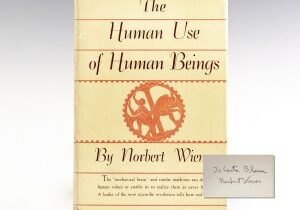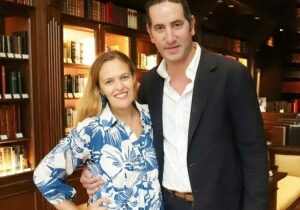Richard Feynman, born in May 1918, became one of the most well-known physicists of all time. Feynman was born in New York to Jewish parents, though he held no strong feelings toward his faith. He discovered early on his talent for engineering, maintaining a small experimental laboratory where he would repair radios. His practical scientific engagements turned theoretical as he matured. At the age of fifteen, Feynman began to teach himself advanced mathematics, and after his undergraduate studies at MIT, he began graduate and PhD studies at Princeton.
It was at Princeton that Feynman’s interest in quantum physics flourished. Over the course of his career, he gained notoriety for his work in the path integral formulation of quantum mechanics, the theory of quantum electrodynamics, the physics of the superfluidity of supercooled liquid helium, as well as his work in particle physics for which he proposed the parton model. Feynman soon became one of the most well known scientists in the world. His ability to popularize different theories of physics through books and lectures made him exceptional amongst scientists.
Feynman’s wit, candor, and acumen are prominently displayed in his 1959 lecture on top-down nanotechnology ‘There’s Plenty of Room at the Bottom’ as well as the three-volume publication of his undergraduate lectures, The Feynman Lectures on Physics. Ranging from the most basic principles of Newtonian physics to such formidable theories as general relativity and quantum mechanics, Feynman’s lectures stand as a monument of clear exposition and deep insight. “The whole thing was basically an experiment,” Feynman said late in his career when looking back on the origins of his lectures. The experiment turned out to be hugely successful with more than 1.5 million English-language copies having been sold; probably even more copies have been sold in a dozen foreign-language editions.
Our collection currently includes Feynman’s own personal copy of his Lectures on Physics with his ownership signature to each volume; a truly unique example of one of the most important physics text ever published.
Feynman’s grasp of physics is best displayed in his QED: The Strange Theory of Light and Matter, published in 1985. Based on his decades of research and teaching in theoretical physics, Feynman provides a classic and definitive introduction to QED (namely, quantum electrodynamics), that part of quantum field theory describing the interactions of light with charged particles. QED represents some of the 20th century’s greatest discoveries in physics, building upon earlier work done by Albert Einstein in his Relativity: The Special and General Theory. Our collection currently includes the first edition copy of Feynman’s QED signed by him featured above.

Richard P. Feynman’s National Medal of Science, bestowed upon him by President Jimmy Carter in 1979.
Feynman’s fame and achievements soon went beyond the field of physics. In 1979, Feynman was awarded the National Medal of Science by President Jimmy Carter. Established in 1959, the National Medal of Science is an honor bestowed annually by the President of the United States to individuals in science and engineering who have made important contributions to the advancement of knowledge in the following six fields: behavioral and social sciences, biology, chemistry, engineering, mathematics and physical sciences.
Outside of his work in physics, Feynman has also been credited with pioneering the field of quantum computing and introducing the concept of nanotechnology. For his contributions to the development of quantum electrodynamics, Feynman received the Nobel Prize in Physics in 1965 jointly with Julian Schwinger and Shin’ichirō Tomonaga. In addition to the Nobel Prize and National Medal of Science, Feynman received the Oersted Medal in 1972 and Niels Bohr International Gold Medal in 1973.
Before his passing in 1988, Feynman composed an autobiography reflecting on many of his outrageous adventures. Feynman was called upon to provide assistance to the U.S. government during the Second World War, working on the Manhattan Project with Robert Oppenheimer. First published in 1985, Feynman’s autobiography “Surely You’re Joking, Mr. Feynman!” Adventures of a Curious Character recounts in his inimitable voice his experience trading ideas on atomic physics with Einstein and Bohr and ideas on gambling with Nick the Greek; cracking the uncrackable safes guarding the most deeply held nuclear secrets; accompanying a ballet on his bongo drums; painting a naked female toreador. In short, here is Feynman’s life in all its eccentric―a combustible mixture of high intelligence, unlimited curiosity, and raging chutzpah.
In addition to the titles featured above, our collection currently includes a collection of early printings of his Lectures on Physics inscribed by him to Alfred Paul Seckel. View the complete collection here.













